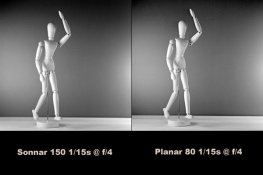Q.G.
Member
The old timers would be wrong though.Envision, for the moment, a shutter that is perfectly timed at 1/250 and 1/500.The point the old timers made was that---with a leaf shutter--- there would be no detectable difference in density between 1/250 at f/22 and 1/500 at f/22--even though we all KNOW there should be one stop difference.
There IS a detectable difference. And it mostly is near enough 1 stop in size.
Again, if there would not be, do you suppose all those leaf shutter users are somehow ignorant of the fact, and that's why they were, and still are, using leaf shutters?

It's not a problem.
Really! It isn't!





